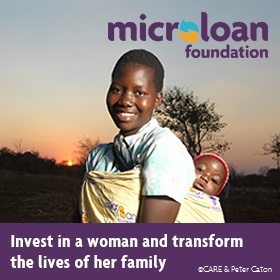How to foster trust and connection through heartset, mindset and skillset
Imagine your internal learning circuitry as an interconnected network of circuits that run between your head and heart, and throughout your body.
Just as wires transmit electrical signals between the switch and the light in your home, you have networks of neurons that transmit electrical impulses through your brain, heart and nervous system.
When your Heartset, Mindset and Skillset are connected and optimised, you have a coherent creative energy flow and your family’s potential is limitless. You are plugged in and powered up. How brightly your inner light shines is determined by how these components are activated during the learning process. This determines the choices you make, the actions you take, how you behave and the outcomes you get.
When there is a disconnection, your lights dim or switch off and you feel lost in the dark. Unplugged. Powerless. When you shift your focus to your internal reality you can react in new ways. This is when you can realise your maximum potential. You, and only you, get to decide how you use it, when you use it and whether you use it.
Let’s look at these core components in more detail.
Heartset – your emotional connection
Think of your Heartset as the emotional home to your dreams and desires. It is where you find the courage to explore your curiosities, pursue your passions and commit to a life full of purpose. Just as switches control the flow of electricity in your house, your emotions switch on, dim or turn off your lights.
Lights Off emotions, such as fear, anger and sadness, act as the off switch, hindering the flow of energy, creating a loose, glitchy circuit connection and limiting your potential to shine in that moment. These emotions are particularly powerful for growth. Lights On emotions, such as happiness, hope, joy, love and gratitude are like the on switches. They enable your radiant energy to flow so you can fully explore and express your learning potential.
How to access your full emotional range
Learning is an emotional experience, and being aware of your inner emotional state transforms your outcomes. In her ‘Theory of Constructed Emotions’, Lisa Feldman Barret proposes we give meaning to our emotions based on thinking from past experiences and our worldview. This means you are not at the ‘mercy of your emotions’, instead you get to decide what this ‘internal pattern of biological events’ means.
Butterflies in your tummy can either be experienced as being nervous excitement (Lights On) or anxiety (Lights Off). You choose. Barret believes, as I have discovered, too, that we ‘have the capacity to turn down the dial on emotional suffering’ and ‘curate our unique life experience’.
When we develop our self-awareness of our internal state, known as interoception, we can use our emotions as subtle signals to direct our attention and focus. We can take decisive action to open up our field of potentiality. It’s magical to see.
The Lights On metric builds the habit of noticing a shift from Lights On to Lights Off so you can use your breath, quieten your mind or go outside and move physically to calibrate back to being Lights On. The metric also enables you to determine the difference between healthy disengagement that you can harness for growth, or become aware of a persistent underlying cause or health concern you need to address with the support of medical or mental health professionals.
Your heart ensures you flourish
Obviously, we’re all aware of the important role our hearts play in keeping us physically alive. However, our hearts also play a vital role in helping us flourish and feel mentally and spiritually alive. Research by the HeartMath Institute shows that two-way communication between our heart and brain enables us to create heart-brain coherence and balance the sympathetic and parasympathetic nervous systems.
From a scientific, intuitive or educational stand-point, then, it doesn’t make sense to leave your family’s hearts out of your education strategy. Bringing passion, purpose and play into learning is the most powerful way to energise and supercharge their engagement. Quite simply, Lights On Learning feels so good and is great for your mental, emotional and physical health.
Mindset – the mental connection
Your brain is of course central to your Lights On Learning circuitry and acts as a command centre. It sends information through an extensive interconnected network of between 80–128 billion neurons within your nervous system. Just as wires transmit electrical signals between the exchange and your home, your neurons communicate throughout your nervous system via electrical impulses and chemical messengers, known as neurotransmitters, such as dopamine, oxytocin, serotonin and endorphins.
Your thoughts, like resistors in an electrical circuit, regulate your emotions and nervous system. They sharpen your focus and attention, affecting how you express yourself. In a very real way, your thoughts define the edges of your comfort zone and the boundaries of your limitations. They can either hold you back or set you free to express your potential.
Lights Off thoughts – ‘I can’t do this, it’s too hard. I’m rubbish and probably going to fail anyway, so why bother?’ – cause you to shrink, hide and play it safe. Lights On thoughts – ‘I can do this. I have what it takes. I can do hard things’ – will provide you with a sense of expansion where anything feels possible.
The challenge comes because of the sheer number of thoughts we have each day. Only a small percentage of our thoughts need our conscious mind. Most of our thinking comes from automated programmes hard-wired in our unconscious mind during our formative childhood experiences within our homes, schools and communities.
Our neurocircuitry, as parents, caregivers or educators, impacts our child’s emotions, motor skills, behavioural control, logic, language and memory, more than we might like to admit. This is why Lights On Learning is about whole-family transformation, and not just for your child who is disengaged. Imagine using the power of rewiring your Lights Off circuitry to change the generational legacy for future generations to come.
A family of ‘cans’ versus the ‘cannots’ is dependent on your mental connection
Take a moment to reflect on whether your child believes they ‘can’ find a way to figure it out when things get challenging, regardless of how long it might take, or if they become stuck telling themselves they ‘can’t’, and give up when things don’t fall into place easily for them.
Dr Carol Dweck’s research on mindset clearly shows that what we believe to be true about ourselves as learners matters. Our thoughts and beliefs impact our motivation, performance and achievement. With a growth mindset, we see learning as a process and value mistakes as part of success. We understand that we can use our brain’s neuroplasticity to grow. What once was impossible, like walking for a toddler, becomes possible when we train our brains to create neural networks that work for us.
In contrast, when we have a fixed mindset, we are more reactive as we view intelligence as something we either have or don’t have. This leads to fear of failure. We give up easily, procrastinate or avoid the task completely. We obsess about the outcome and miss being present in the process.
Skillset – the physical connection
Lights On Learning brings your heart, head and hands into the process of learning, making it an active, physical and fully embodied experience. As your child develops the practical skills and capabilities linked to their ‘switch’ (the creative expression that lights them up), they start turning their dreams, desires and ideas into tangible, physical reality. Now you can invest time, energy and resources to develop the relevant skills that enable them to pursue their big, bold dreams with courage.
Think about a toddler learning to walk. To start with, they have no neural network to put one foot in front of the other in a coordinated way. To develop that skill, they must practise, fall, get back up and try again. During this learning phase, neurons ‘fire and wire together’ into a neural network that makes it possible to take their first wobbly steps.
Their persistence, repetition and commitment to the outcome strengthen the synaptic connections (the microscopic gap between neurons) and speed up communication within the neural network. This is ultimately what learning is: the wiring of highly efficient automated neural circuits that can lead to mastery.
Think about whether your child has real, authentic, tangible evidence of their learning and growth potential that makes them stand out from the crowd, or are they still competing purely with old-school metrics and extra-curricular activities that millions of others around the world also have? It is their emotional, mental and physical connection to learning that will give them the edge and lead to their success.
When all three are working in harmony, you have a coherent energy flow and your inner light shines brightly. Lights On. This is when you feel a deep sense of meaning and fulfilment. If one component is dialled down, or disconnected, your lights may stay on but not as brightly. When you face a significant challenge or are triggered in some way, your lights might go off altogether. Becoming more aware of your internal state is key to building your family’s mental, emotional and physical resilience.
Julia is a mother to two young adults and creator of Lights On, a global community for parents who want to bring the latest thinking from neuroscience, positive psychology and passion-led learning into their homes. Her vision is of a world where all children love learning, and parents are the key to that future. In addition to this, Julia is also a BAFTA and Grierson nominated documentary director, educationalist, Master Neurocoach and author of Lights On Learning.




